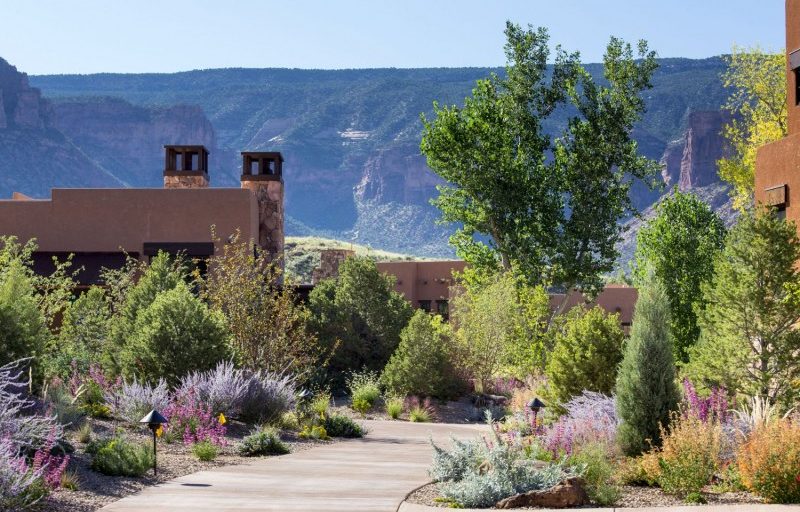Water Wise Landscaping
Water-Wise Landscaping For All Regions
Water as a scarce resource isn’t news, but we’re hearing about it more of the time and in more places. We’ll continue to. While regions differ (here in Colorado, we’ve had our wettest year in 10 while California, New Mexico, and Texas are still sitting in drought), water conservation has big implications for the design of outdoor spaces all over the country.
Unfortunately, xeriscaping has been an uphill battle. Drought-tolerant has a bad rap as ugly dry, hard, hot, and drab. That’s because bad examples abound: Spread a bunch of gravel in the front yard in place of a lawn, add two haphazardly placed boulders, and a large potted plant, and you’re done. That’s not pleasing, and it’s not an improvement.
When people hear the words “drought tolerant,” they assume they’ll have to give up the idea of lush, soft, green outdoor space. But water-smart landscaping can be beautiful, lush, and colorful. Plant selection, soil, and smart design are the answers. With those, you can do landscaping that’s as beautiful as it is water wise, and that won’t take three years to grow in.
Direct the Water. Management regulations differ from place to place. In some areas, standing water in the form of a cistern isn’t to code; in other places, it’s okay. One way to get around this is to divert rainwater into a planting area so it comes off your house in the form of berming and coursing. Rain chains, of course, are a heck of a lot prettier than an 8-foot gutter extension.
Lose the Lawn (Mostly). Bluntly put, a lawn is a huge water-suck. Think of the lawn as the accent rug, not the wall-to-wall carpet. You’ll get more bang for the buck in visual effect this way, and you’ll use a fraction of the water. Select grass types that require less watering, too. Understand that, within a lot, homeowners who have a little bit of lawn are going to use it. Luckily, varieties that are drought-tolerant but can handle traffic. For a side or front yard that doesn’t see as much action, consider cool season, hybrid, and no-mow grasses that are hardy, don’t need irrigating—and yes, are green.
Think Big Picture. As a developer, here’s where you need to put your attention (and we’ll be doing a subsequent piece on that). The problem is that engineers have had to design neighborhoods and subdivisions based on a service flow for the entire land area. If water can’t be stored onsite, it needs to be dispersed. Most of those solutions have been done underground, with expensive pipes. We’ve found ways to handle water on or near the surface so it can benefit planting and landscaping, and even become an amenity (instead of underground, invisible, and expensive). It’s the way to get the most use out of every drop of water you have.


 BACK TO BLOG
BACK TO BLOG